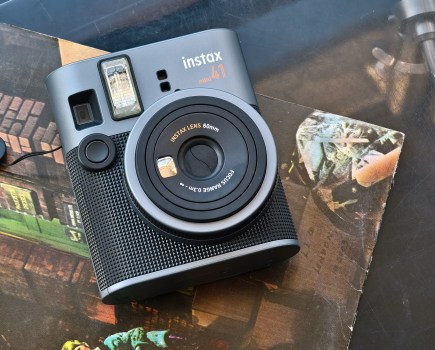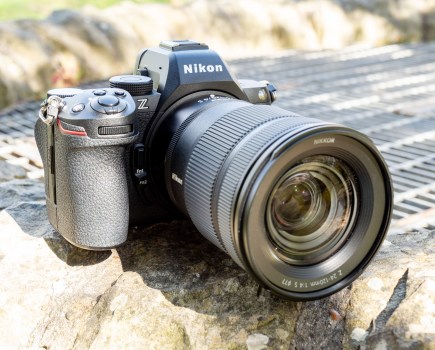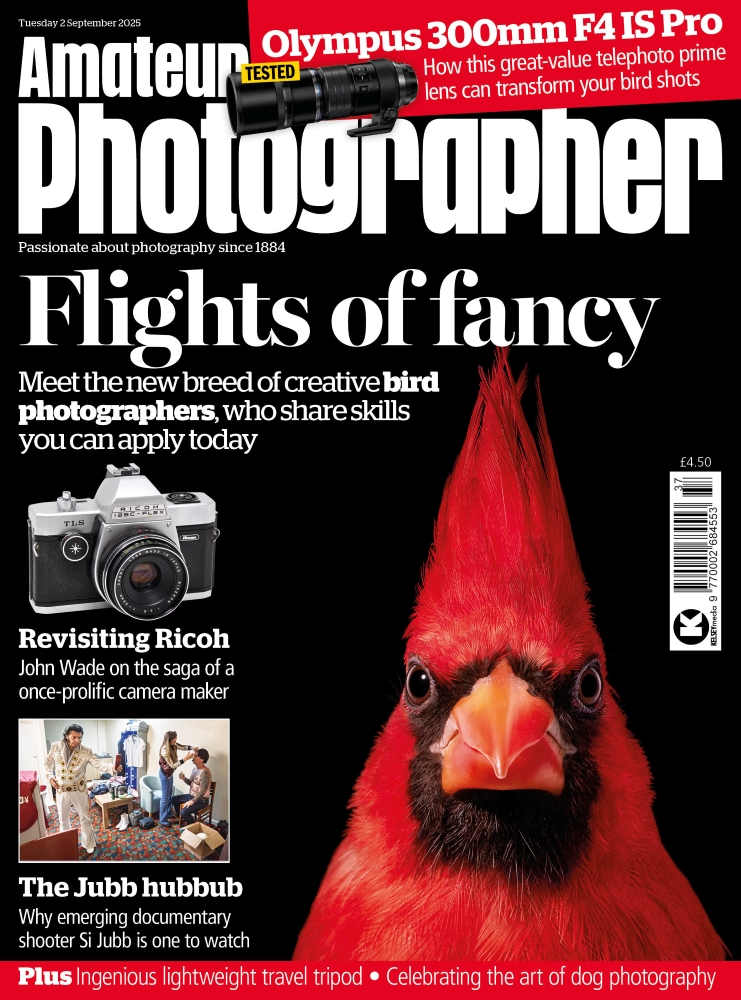Those who want the best budget smartphone have lots of choice right now. Not all of them are amazing for photographers, but some give you good results without the need for spending a fortune.
The most recent iPhone, the iPhone 16e, is designed to offer the latest Apple tech in a more affordable body. But, this is more affordable by Apple standards, so it’s still pretty expensive.

I therefore wanted to find out whether the average person was better off spending less on a Samsung – in this case the A56, its popular budget-friendly triple-lens offering.
Here’s what I found out…
iPhone 16e vs Samsung Galaxy A56: Specifications
In the table below, I’ve compared some of the main specs of the iPhone 16e with the Samsung Galaxy A56, paying particular attention to the features which are most likely to be of interest to photographers.
Of course, the biggest difference is that the iPhone 16e has just ONE lens, while the A56 offers THREE. That – on paper at least – should give you an indication that you’re getting better value for money with the Samsung. But of course, it is slightly more nuanced than that.

The main lens of the iPhone 16e is 48MP, but by default, it outputs to 24MP. All those extra pixels also come in handy for the “lossless” 2x zoom it promises. The A56 has a 50MP main sensor, but the output default image size is 12MP. A 23mm equivalent lens for the A56 is probably a bit more appealing than the slightly narrower 26mm for the iPhone, but it’s not a huge difference.
With the A56 you also get an ultrawide lens, which many will favour for landscape shots and so on. There’s also a 5MP macro camera, which helps to roundout the specs sheet, but in practice, isn’t hugely useful. It’s probably better to say that we’ve got two good lenses competing against one good lens, than to totally give the iPhone a battering by saying it’s 3 against 1.
| iPhone 16e | Samsung Galaxy A56 |
|---|---|
| 48MP f/1.6 main (only camera), OIS, 24MP output, 26mm equivalent, 2x in-sensor crop zoom | 50MP f/1.8 main camera, PDAF, OIS, 12MP output, 23mm equivalent |
| N/A | 12MP f/2.2 ultrawide camera |
| N/A | 5MP f/2.4 macro camera |
| 12MP f/1.9 selfie camera | 12MP f/2.2 selfie camera |
| 4K 60fps video | 4K 30fps video |
| 6.1-inch OLED Super Retina 2532×1170 pixels, 1200 nits max brightness, Ceramic Shield Front | 6.7-inch Super AMOLED 2340x 1080 pixels, 1900 nits max brightness, Gorilla Glass Victus+ |
| IP68 splash, water and dust resistant | IP67 splash, water and dust resistant |
| Apple Intelligence, A18 Processor | Galaxy AI, Exynos 1580 processor |
| 26 hour battery life, wireless and fast charging (20W) available | 5000mAh battery, fast charging (45W) available |
| 128/256/512GB | 256GB storage |
| 146.7 x 71.5 x 7.80mm, 167g | 162.2 x 77.5 x 7.4mm, 198g |
Other differences largely come in the shape of design. The A56 is much bigger, with a 6.7-inch screen, but it’s also not quite as resistant to dust and water as its rival. Both have tough front screens though, so that’s good news (Apple claims its is the toughest on the market, but Gorilla Glass Victus is also known to be very good).

Of course, you will be using a different native camera app between the two models. There’s a little more choice presented in the Samsung’s app, such as extra Portrait mode functionality and a Pro mode, but neither give you options to shoot in raw.
Both offer their own versions of inbuilt AI functionality, which for photographers includes the option to “clean up” images – such as removing things from a scene.
iPhone 16e vs Samsung Galaxy A56: Image Quality
I took photos with both the iPhone 16e and the Samsung Galaxy A56 in a variety of different situations, in order to directly compare the two. Use the sliders to compare the results – the iPhone is always on the left, the Samsung always on the right.


Images from both the 1x lenses are pretty good, and they’re actually pretty similar. There’s plenty of detail on the display and the colours are well represented. The iPhone (left) has a warmer tint to it than the Samsung, but which you prefer is down to your own tastes.
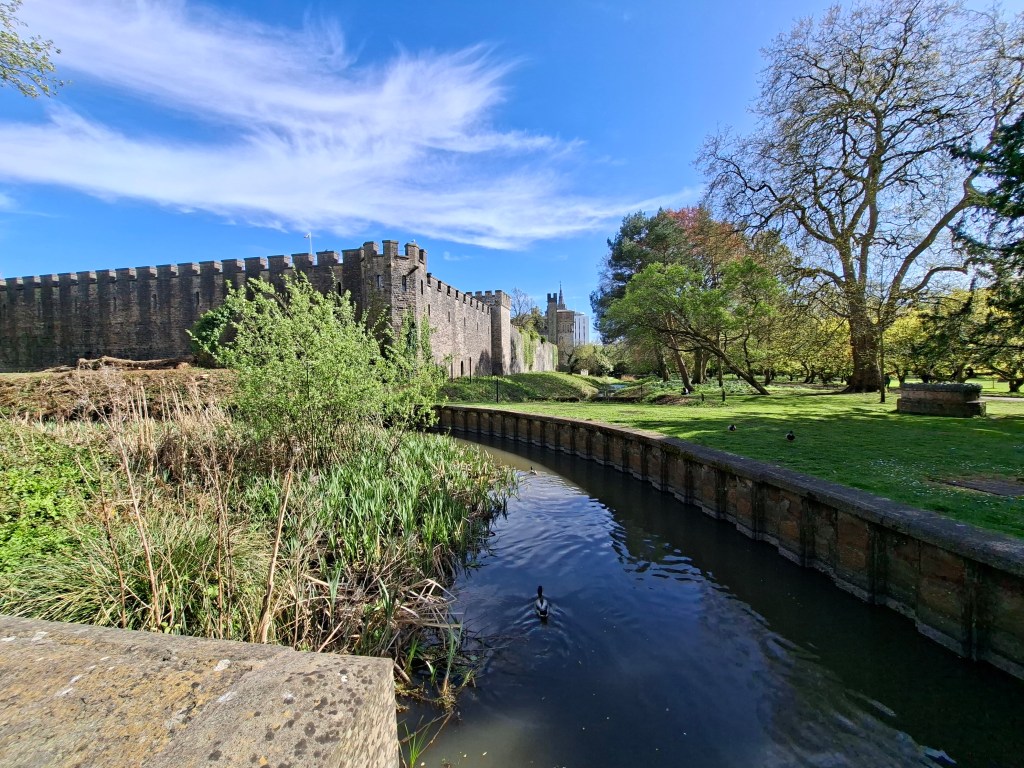
There’s no ultrawide lens on the 16e, so I can only show you an image from the A56. Here, the quality is not quite as good as from the 1x, but for social media and so on, it’s more than acceptable. I really like using an ultrawide lens, but if you’re less bothered about these, then perhaps it’s not such a dealbreaker.


Neither of these phones have an actual zoom lens, but you can use digital zooming / in-sensor cropping to reasonably good effect. Here we can see the 2x “zoom” in action. Both are actually reasonably good, with a decent amount of detail and some good colour rendition. Again, the iPhone is a bit warmer than the Samsung.


You can zoom up to 10x digitally with either of these models. But would you want to with either? Not really – you can see both lose a lot of detail and create smudgy results. Perhaps if you’re desperate and are only going to use the images at small sizes, they might be just about acceptable. There’s perhaps a touch more detail from the iPhone (left), but there’s not much in it.


So here’s quite a big and obvious difference. There’s no macro mode for the iPhone 16e, while the A56 has a dedicated macro lens. I’m not going to pretend the A56’s macro lens is amazing – it’s not – but at least it has focused on these flowers. It’s OK for using at small sizes, though not something I’d want to use all the time. That said, the iPhone’s is of course completely unusable so it’s the out and out loser here.


Both these models produce reasonably usable images in low light when shooting with the 1x lens / option. There’s a bit more detail in the foreground of the shot taken with the A56, while there’s also less smudging in the trees. But I’d probably be happy with either of these options. The ultrawide lens of the A56 doesn’t produce great results, but it is of course better than the non-existent iPhone 16e’s. Beyond the 1x option, you’ll need to rely on digital zoom again – neither do an amazing job in low light, though.


You can get pleasing portraits from either the 16e or the A56. However, the iPhone 16e is a lot fussier about what it accepts as a portrait subject. You categorically can’t shoot anything other than humans with it – so your cats and dogs don’t get the shallow depth of field treatment. You also definitely can’t use it for inanimate objects. Even when shooting very obvious humans, sometimes it decides that the subject is too far away, or too close, whereas the A56 generally just got on with it most of the time. Results-wise, both have a fairly pleasing appearance, with softly blurred backgrounds and a nice amount of detail. Due to the usability issues of the iPhone, I’d definitely favour the A56.


Both the selfie cameras here are 12MP and without autofocus. Still, they do a good enough job. The Samsung’s overall is probably a bit more flattering and nicely coloured.
iPhone 16e vs Samsung Galaxy A56: Value for Money
It’s incredibly hard to argue that the iPhone 16e offers value for money, even before you start comparing it against Android rivals.
At a starting price of $599/£599, you don’t get a huge amount for your money. But when you consider that the Samsung A56 is £499 (US price yet to be confirmed) and gives you triple the lenses then it looks even worse value.
Things get even worse when you consider storage. The £499 price for the Samsung gives you 256GB storage. If you want the same from the iPhone 16e, you’re now looking at $699/£699.
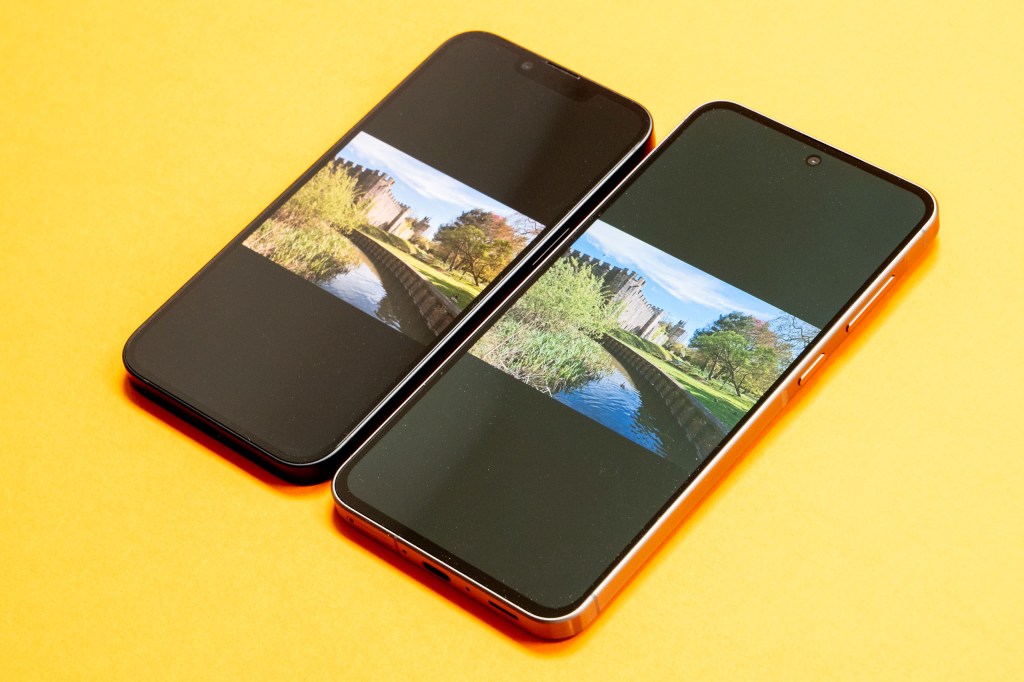
Of course, there are plenty of people who are iOS diehards, and plenty who favour Android. If you’re in the former camp, you may feel it’s worth the extra $100/$200 just to have an Apple model – which is fair enough, no judgement here.
But for those who are agnostic about operating systems, it’s essentially impossible to argue anything other than the Samsung offers the best value of the two.
iPhone 16e vs Samsung Galaxy A56: Verdict
If you’re looking for a good mid-range phone, that gives you the opportunity to take some nice pictures without having to spend a huge amount, then both of these will do that for you.
However, I feel what you get, the iPhone 16e is overpriced. It’s significantly more expensive than the Samsung A56, yet has fewer features, less memory, a smaller screen and in some cases the photographic results aren’t as good either.
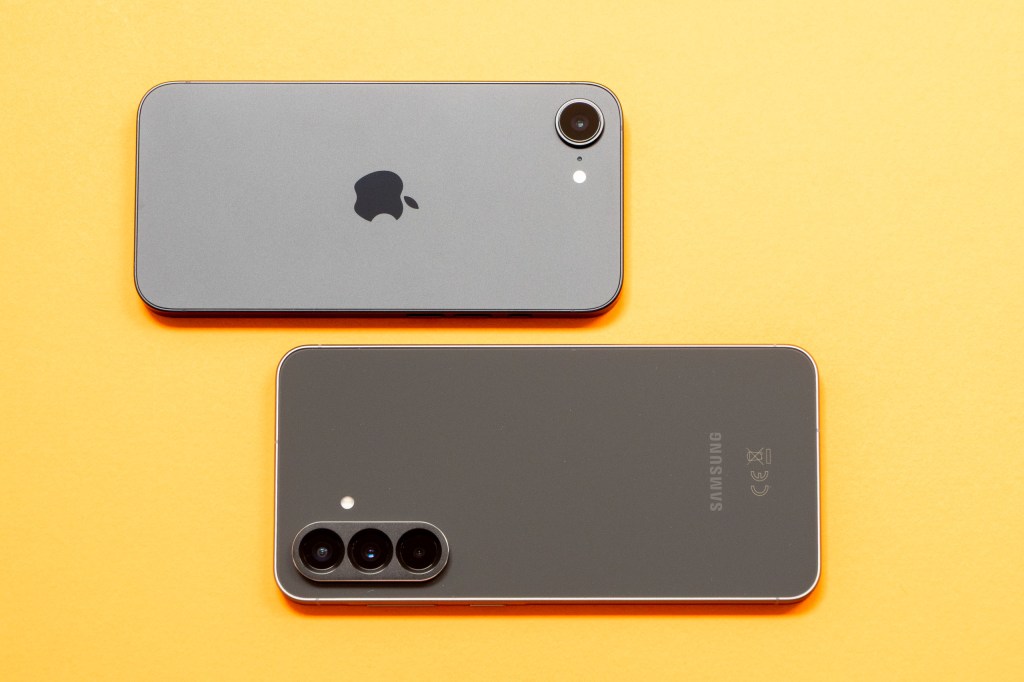
If you are a big fan of Apple and want to stay within its ecosystem, then it will obviously win for you, but otherwise, I can’t recommend anything other than the Samsung of these two.
You might also wish to consider the Google Pixel 9a and the Oppo Reno 13 Pro if you’re keen to see other mid-range devices, too.





